Exploring The New Code: Balance Beam
Exploring The New Code: Balance Beam
Exploring The New Code: Balance Beam

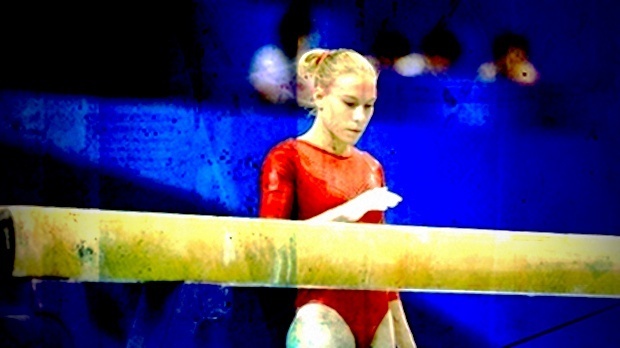
The Federation of International Gymnastics has released the 2013-2016 Code of Points. Over the next several weeks, we will explore the changes in the Code and analyze how the changes will help and possibly even hurt the sport.
Balance beam has more changes than vault and uneven bars.
Leaps and Jumps
The 2013-2016 COP has changed some of the requirements for leaps and jumps. They have become less strict with these leaps and jumps. It is interesting because, historically, the FIG has made each COP harder than the last. This is the first time some many requirements have either been made less harsh or completely eliminated.
Below are the changes.
2009-2012 COP
Ring Leap/Change Leg Ring Leap
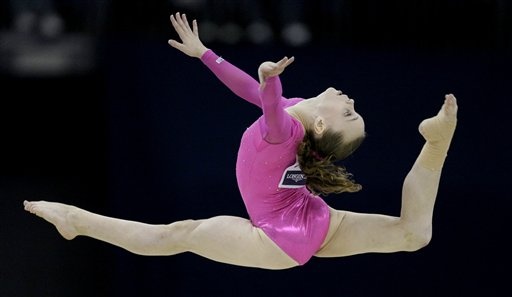
Requirement:
Upper back arch and head release with foot to head height
180° split of legs
Front leg at horizontal
D –Panel
Back foot below shoulder height and/or front leg below horizontal (> 10°) – credit one DV lower
No arch and release of head – credit split leap or split leap with leg change
E - Panel
Insufficient arch position – 0.10
Foot of back leg to shoulder height – 0.10
Front leg is below horizontal (incorrect leg position) – 0.10
Note: Back Leg Bent or Straight is the same element
Requirement:
Upper back arch and head release with feet almost touching head (Ring shape)Reward DV
D - Panel
No ring shape – No DV
No upper back arch and release of head – No DV
E - Panel
Insufficient arch position – 0.10
Insufficient closure of feet to head – 0.10
Legs apart – 0.10/0.30
Sheep/Ring Jump
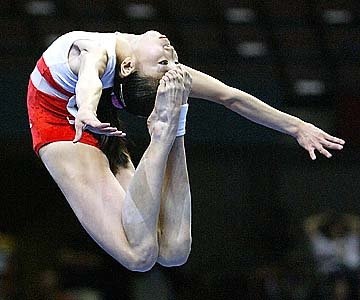
Requirement:
Upper back arch and head release with feet almost touching head (Ring shape)
D – Panel
No ring shape – No DV
No upper back arch and release of head – No DV
E - Panel
Insufficient arch position – 0.10
Insufficient closure of feet to head – 0.10
Legs apart – 0.10/0.30
Yang Bo
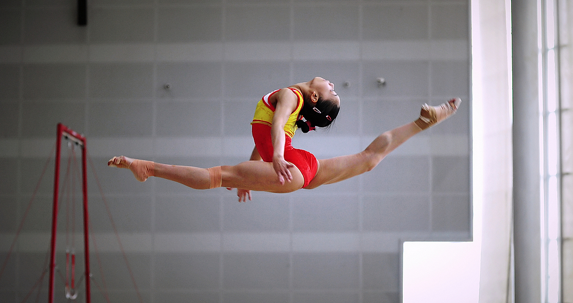
Over split with front leg min. Horizontal
Requirement:
D − Panel
No over split but both legs at horizontal – 1 DV lower
Over split but front leg below horizontal – Ring Jump
No arch & release of head – Split Jump or Sissone (if front leg below horizontal)
E − Panel
Insufficient arch position – 0.10
2013-2016 COP
Ring Leap/Change Leg Ring Leap (with/without turn)
Requirement:
Upper back arch and head release
180° split of legs
Front leg at horizontal and back leg bent to head height
D – Panel
Back foot below shoulder height and/or front leg below horizontal –1 DV lower
Back leg straight − Split leap with leg change
No arch & release of head – Split leap or
Split leap with leg change
E − Panel
Insufficient arch position – 0.10
Foot of back leg to shoulder height – 0.10
Sheep/Ring Jump
Requirement:
Upper back arch and head release with feet to head height.
Ring Shape – feet close to head completing circle
D – Panel
Open ring and/or incorrect ring shape – 1 DV lower
No arch & release of head and/or no ring shape – No DV
E − Panel
Insufficient ring position – 0.10
Yang Bo
Requirement:
Over split with front leg min. Horizontal
D − Panel
No over split but both legs at horizontal – 1 DV lower
Over split but front leg below horizontal – Ring Jump
No arch & release of head – Split Jump or Sissone (if front leg below horizontal)
E − Panel
Insufficient arch position
Changes to Difficulty Values
Fourteen skills have had their values changed. Thirteen of the fourteen skills have increased in value. Once again, this is a rare move by the FIG.
2013-2016 COP
Round-off to Onodi mount
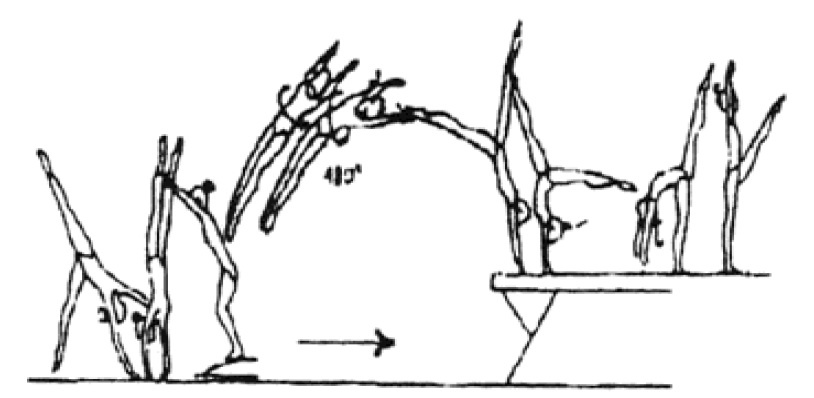
Round-off at end of beam – flic-flac
with ½ turn (180°) and walkover fwd
E (from D)
Planche
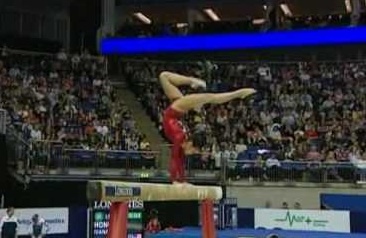
Hstd in cross position with large
arch span, also piked with one leg
vertical, other leg bent (2 sec.)
lower to optional end position
C (from B)
Front Aerial Walkover Mount
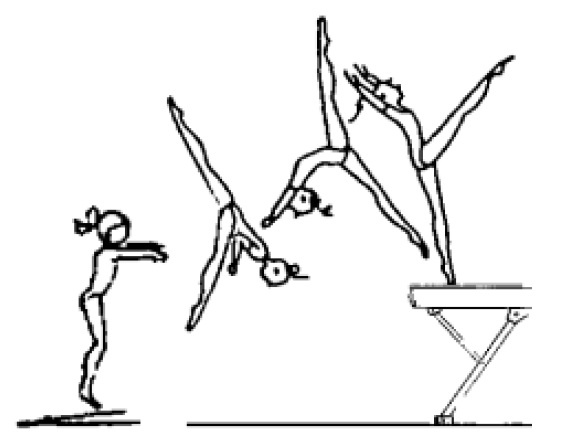
Aerial walkover fwd to cross stand –
approach at end of
beam, take off from both feet
E (from D)
Front Tuck Mount
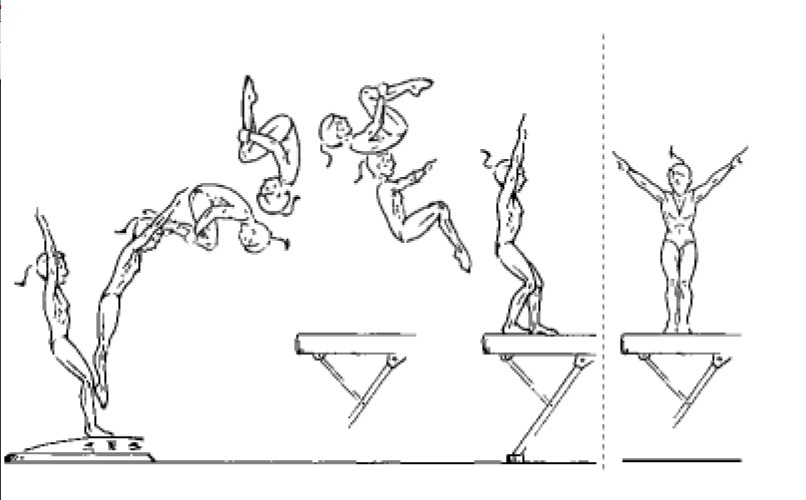
Salto fwd tucked to cross or side
stand – approach at end of beam
D (from C)
Front Pike Mount
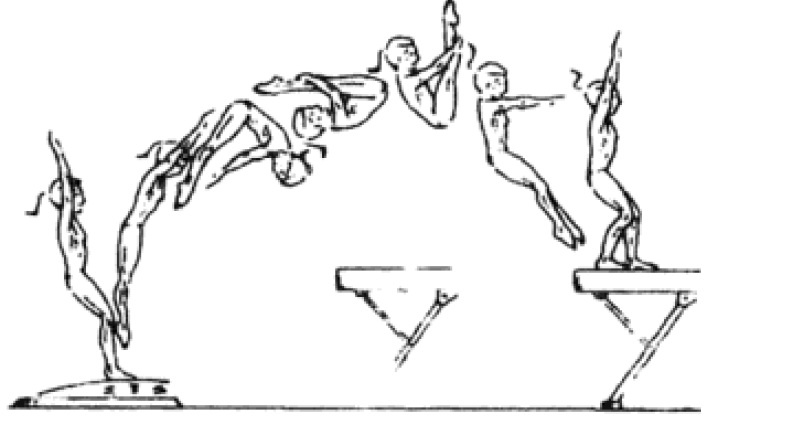
Salto fwd piked to stand – approach
at end of beam
E (from D)
Round-off to Tucked Arabian Mount
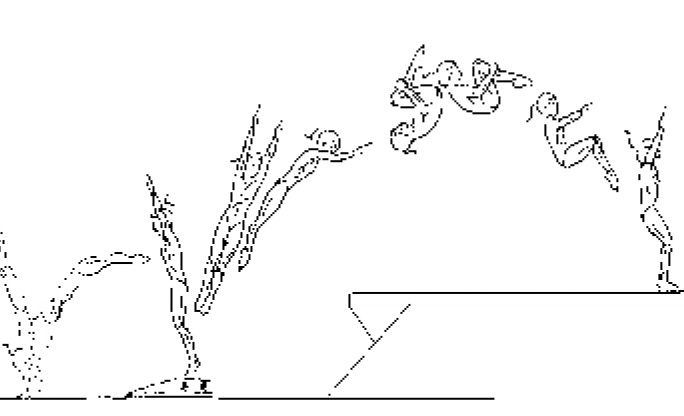
Round-off at end of beam –
take off bwd. with ½ turn (180°)
tucked salto fwd. to stand
G (from F)
Round-Off to Full Twisting Back Walk Over Mount
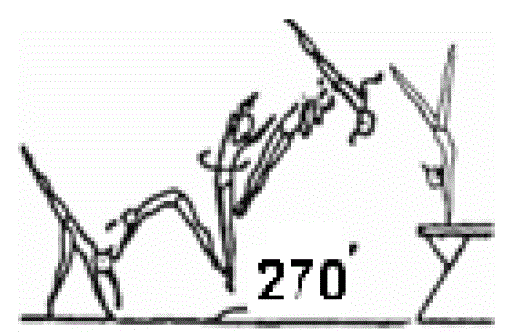
Round-off at end of beam – flic-flac
with ¾ twist (270°Âš) to cross stand on beam
E (from D)
Butterfly leap
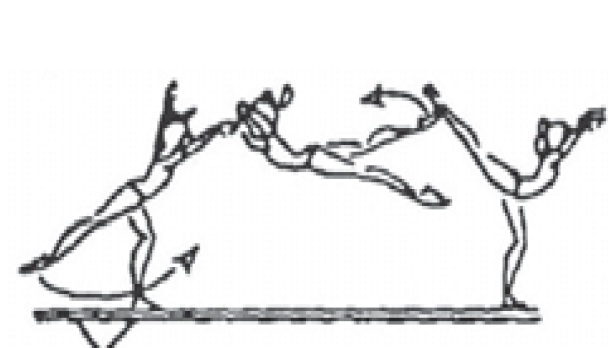
C (from D)
Split ring leap (180° separation of legs)
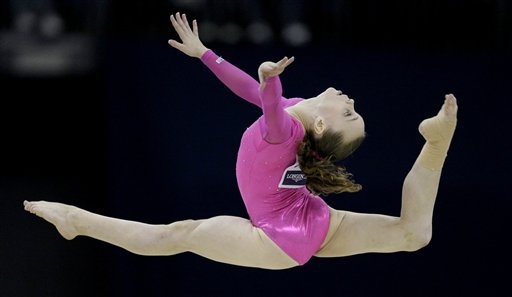
D (from C)
Tuck hop or jump with 1½ turn (540°)
from cross position
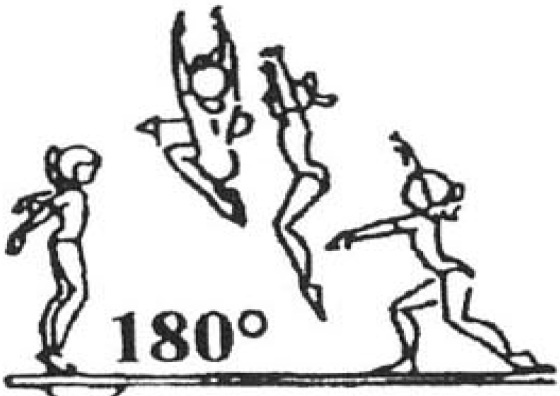
D (from C)
Wolf hop or jump with 1½ turn
(540°) from cross position
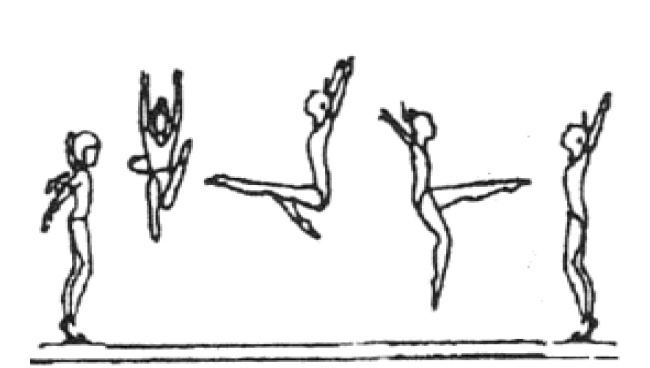
E (from D)
Body Spin
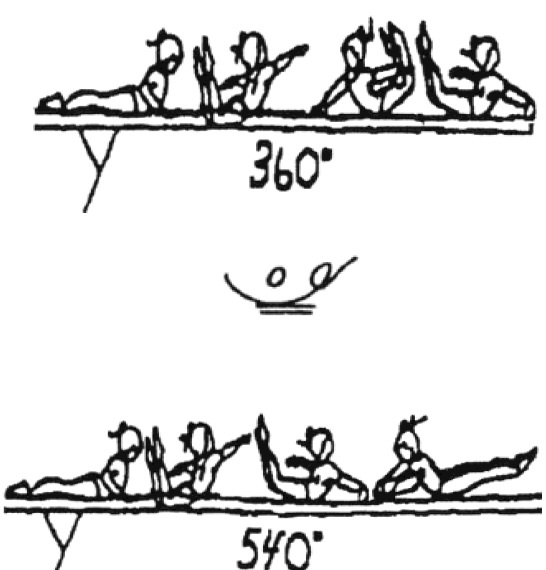
1/1 turn to 1½ turn (360°- 540°) in
prone position – alternate support
of hands permitted
B(from A)
B(from A)
Full Twisting Back Walk Over
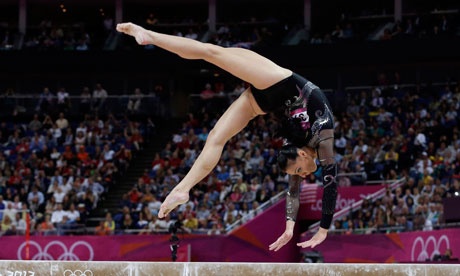
Flic-flac with min. ¾ twist (270°)
before hand support
E (from D)
Gainer Full Twisting Back Walk Over
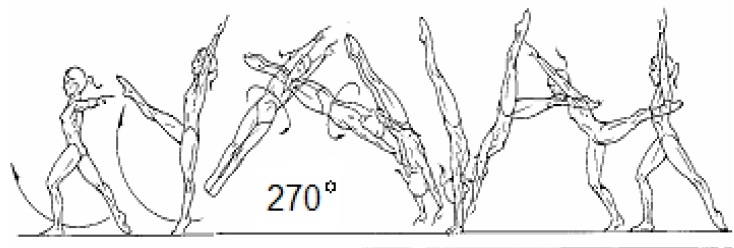
Gainer flic-flac with min. ¾ twist
(270°) before hand support
E (from D)
Example of Connection Bonus (CB):
2009-2012 COP
Acrobatic
0.10 0.20
2 acro flight elements, excluding the dismount
C/D + D (or more)
C + C
B + E
C/D + D (or more)
B + F
3 acrobatic flight elements, including the mount and dismount
(DMT minimum D)
B + B + D
C + B + C
B + B + E
C + C + C
B + C + D
Turns
A + C (or reverse)
Note: May be performed on the same support leg, or with step into turn
on opposite leg (brief demi - plié on one or both feet is permitted)
Mixed
C + C or more (excluding dismount)
D – salto to 1 foot + A- scale (this order & no step is permitted into scale)
2013-2016 COP
Acrobatic
0.10 0.20
2 acro flight elements, excluding the dismount
C/D + D (or more, without rebounding)
C + C
B + E
C/D + D (or more, rebounding)
B + D
(Rebound in fwd direction only)
B + F
Connections of 3 or more acro elements, including mount & dismount
(min. C) will be rewarded with a “Series Bonus” of 0.10
Starting from B + B + C (any order)
In addition to CVs for the formulas above
Examples # 1:
B + B + C = +0.10 series bonus
D + B + C = +0.10 series bonus
Example #2:
+ 0.10 series bonus Total CV + SB = 0.30
Connections with rebounding effect develop speed in one direction:
Landing (on two feet) from the 1st flight element with hand support
followed by an immediate take-off/rebound into the 2nd element, or
Landing from the 1st element on one leg and placing the free leg with
an immediate rebound from both legs into the 2nd element.
In connections of more than 2 elements, non-flight acro elements Min.B (except “Holds”) may be used.
Dance and Mixed
(acro – flight elements only), excluding dismount
C + C or more
A + C (Turns only)
D (salto) + A (dance)
D(salto) to 1 foot + A scale (This order & no step is permitted)
D + D or more
Note: Turns may be performed on the same support leg, or with step into turn on opposite leg (brief demi-plié on one or both feet is permitted)
New Skill:
Wong Hiu Ying of Hong Kong introduced a new mount at the London Olympics that has now been named for her. A front tuck with a half twist in flight. It is a E skill. [video here]
Introducing H Skills
The New Code has also introduced the possibility of H skills. Currently, there are no H valued skills on uneven bars and balance beam. But the FIG will value new skills at H if the skill meets their requirements to do so.
2009-2012 COP
A = 0.10
B = 0.20
C = 0.30
D = 0.40
E = 0.50
F = 0.60
G = 0.70
B = 0.20
C = 0.30
D = 0.40
E = 0.50
F = 0.60
G = 0.70
2013-2016 COP
A = 0.10
B = 0.20
C = 0.30
D = 0.40
E = 0.50
F = 0.60
G = 0.70
H = 0.80
B = 0.20
C = 0.30
D = 0.40
E = 0.50
F = 0.60
G = 0.70
H = 0.80
It is important to note that the FIG can revise these rules after the first year they are implemented. For example, the 2006 to 2008 COP originally stated that gymnasts had to perform kips to handstands with straight legs. Performing it with a split would be a deduction. However, they found that too many gymnasts were not able to perform it without the split and in turn, revised the rules so that a split was acceptable in 2007 and 2008.
From the changes the FIG has made, it seems they may be listening to the gymnastics community. Scores on balance beam over the past four years have been very low. You had to be a specialist on beam to get at least a low to mid 15. The new rules seem to help raise beam scores. And with the up grading of skills, we will see more exciting beam routines over the next four years.